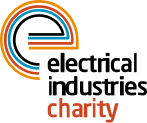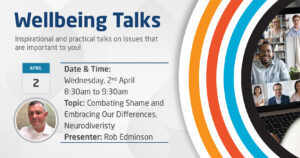July
What is Neurodiversity?
Neurodiversity is a term that has been gaining traction in both the scientific community and popular discourse. At its core, neurodiversity refers to the concept that differences in brain functioning within the human population are normal, and that these differences should be recognized and respected just like any other form of diversity.
The term was first coined in the late 1990s by Australian sociologist Judy Singer, who herself is on the autism spectrum. Neurodiversity suggests that because neurological differences are natural and not the result of disease, they should be treated like any other human variation, such as skin color, gender, or sexual orientation.
Understanding Different Neurological Conditions
Neurodiversity covers a range of conditions including Autism Spectrum Disorder (ASD), Attention Deficit Hyperactivity Disorder (ADHD), Dyslexia, Tourette Syndrome, and others. While these conditions are characterized by certain challenges, they can also be associated with unique strengths. For instance, individuals with ADHD may have difficulty with sustained attention but can also show remarkable creativity and problem-solving skills. Those on the autism spectrum may have exceptional memory and focus, contributing to significant achievements in specialised fields.
Why Neurodiversity Matters
Embracing neurodiversity means moving away from pathologising those who don’t fit a certain “neurotypical” profile and instead creating a society that values and supports all kinds of minds. This approach has profound implications for education, the workplace, and society as a whole. It encourages the creation of inclusive environments that cater to a wide range of learning and working styles.
The Future of Neurodiversity
The neurodiversity movement is not only about recognition but also about advocacy. It’s a push for systemic change that includes better access to diagnostic tools, more personalized educational programs, and workplaces that accommodate various neurological profiles. The ultimate goal is a more tolerant and diverse society, one that sees the potential in every type of mind.
Neurodiversity is an expansive and inclusive concept that challenges us to rethink our attitudes towards cognitive differences. It’s about acknowledging and celebrating the variety in human brain functioning, with all its challenges and strengths. As we become more aware of the spectrum of neurodiversity, we move closer to a society that is truly welcoming for all.
“ADHD/ASD and the umbrella of neurodiversity
Attention Deficit Hyperactivity Disorder (ADHD) and Autism Spectrum Disorder (ASD) are two of the most prevalent conditions under the umbrella of neurodiversity. Their inclusion within this framework has reshaped how society views and responds to these neurological differences.
ADHD and ASD: A Closer Look
ADHD is characterised by patterns of inattention, hyperactivity and impulsivity that are not consistent with a person’s developmental level. Meanwhile, ASD encompasses a range of conditions that affect communication, social interaction, interests, and behavior. Despite their differences, both ADHD and ASD are now understood as part of the natural variation in the human brain rather than defects or disorders.
The Benefits of a Neurodiverse Perspective
Looking at ADHD and ASD through the lens of neurodiversity allows for a more balanced view that recognizes the strengths associated with these conditions. For example, individuals with ADHD may be particularly energetic and inventive, while those with ASD may have an incredible ability to focus and an eye for detail.
Challenges and Opportunities
Individuals with ADHD or ASD often face significant challenges in traditional learning and social environments that are not designed to accommodate their unique ways of processing information. The neurodiversity movement advocates for adaptive educational strategies, such as the use of technology or alternative teaching methods, to help these individuals thrive.
Community and Support
A neurodiverse perspective also emphasises the importance of community and support. By connecting with others who share similar neurological profiles, individuals with ADHD and ASD can exchange experiences, coping strategies, and offer mutual support. This community aspect is crucial for both personal development and broader societal acceptance.
Moving Forward
Recognising ADHD and ASD as part of the neurodiversity spectrum encourages a shift in focus from what individuals can’t do to what they can do. It promotes the development of environments that are more accepting and adaptable to different neurotypes. As the conversation around neurodiversity continues to evolve, it holds the promise of a more inclusive world that values the unique contributions of all individuals.
The inclusion of ADHD and ASD within the neurodiversity umbrella is a positive step towards appreciating and leveraging the unique skills and perspectives that come with these conditions. It’s a recognition that diversity in neurological functioning is as enriching to humanity as any other form of diversity.
Supporting Neurodiverse Children: Fostering Growth and Understanding
Supporting children with neurodiverse conditions like ADHD and ASD requires a compassionate and tailored approach. Each child is unique and what works for one may not work for another; however, certain strategies can generally help support their growth and development.
Understanding Each Child’s Needs
The first step in supporting neurodiverse children is to understand their specific needs. This may involve working with educators, psychologists and other specialists to create an individualised plan that addresses both challenges and strengths.
Creating Inclusive Environments
Inclusive environments that accommodate different learning and socialisation styles are essential. For neurodiverse children, this could mean having access to quiet spaces, being allowed movement breaks or using assistive technologies that aid learning.
Emphasising Strengths
While it’s important to address the areas where neurodiverse children might struggle, it’s equally important to recognise and nurture their strengths. This could include artistic talents, memory skills or problem-solving abilities.
Building Social Skills
Neurodiverse children sometimes find social interaction challenging. Social skills training and structured social activities can provide these children with the tools they need to navigate social complexities.
Collaborative Learning
Working closely with teachers and peers can also help neurodiverse children. Collaborative projects that allow for a variety of contributions can demonstrate the value of different perspectives and skills.
Family Support
Families play a crucial role in the support system for neurodiverse children. Resources and support groups for families can provide much-needed information, strategies and emotional support.
Advocacy and Awareness
Advocating for greater awareness and understanding of neurodiversity in schools and the community can lead to more supportive policies and practices. This includes educating peers about neurodiversity to promote an environment of acceptance and inclusion.
In supporting neurodiverse children, the goal is to create a foundation for them to develop their full potential. This means not only adapting to their needs but also celebrating their unique way of experiencing the world.
Embracing a New Diagnosis: Finding Support and Navigating Life with Neurodiversity
Receiving a new diagnosis of a neurodiverse condition can be a transformative experience for individuals and their loved ones. It often brings a mix of emotions — relief in having an explanation for certain challenges, concern about the implications, and uncertainty about the future. Here are some ways to find support and navigate life after a new diagnosis.
Understanding the Diagnosis
Take the time to learn about the condition. Knowledge is empowering and can alleviate many concerns by providing a clearer picture of what to expect and how to manage it.
Connecting with Others
Seek out communities and support groups of people who share the same diagnosis. Sharing experiences and advice with others who understand can be incredibly comforting and informative.
Seeking Professional Help
Professionals like psychologists, occupational therapists, and counselors can offer invaluable support and guidance tailored to individual circumstances.
Exploring Interventions and Accommodations
There are various interventions and accommodations available that can make daily life and specific tasks more manageable. This could involve therapy, educational support, workplace adjustments or assistive technologies.
Self-Advocacy
Learning self-advocacy skills is crucial. Being able to communicate one’s needs and rights can lead to better support in educational settings, the workplace and healthcare environments.
Building a Supportive Network
Cultivate a network of friends, family and professionals who understand and support neurodiversity. This network can provide both practical help and emotional support.
Celebrating Strengths
Every neurodiverse individual has unique strengths and talents. Focusing on these can not only boost self-esteem but can also lead to discovering new passions or career paths.
Planning for the Future
While a new diagnosis may require some adjustments, it doesn’t define one’s future. With the right support and strategies, individuals can pursue their goals and dreams just like anyone else.
In embracing a new neurodiverse diagnosis, remember that it’s a part of who you are but not the entirety. With support, understanding and self-compassion, it’s entirely possible to lead a fulfilling and successful life.


